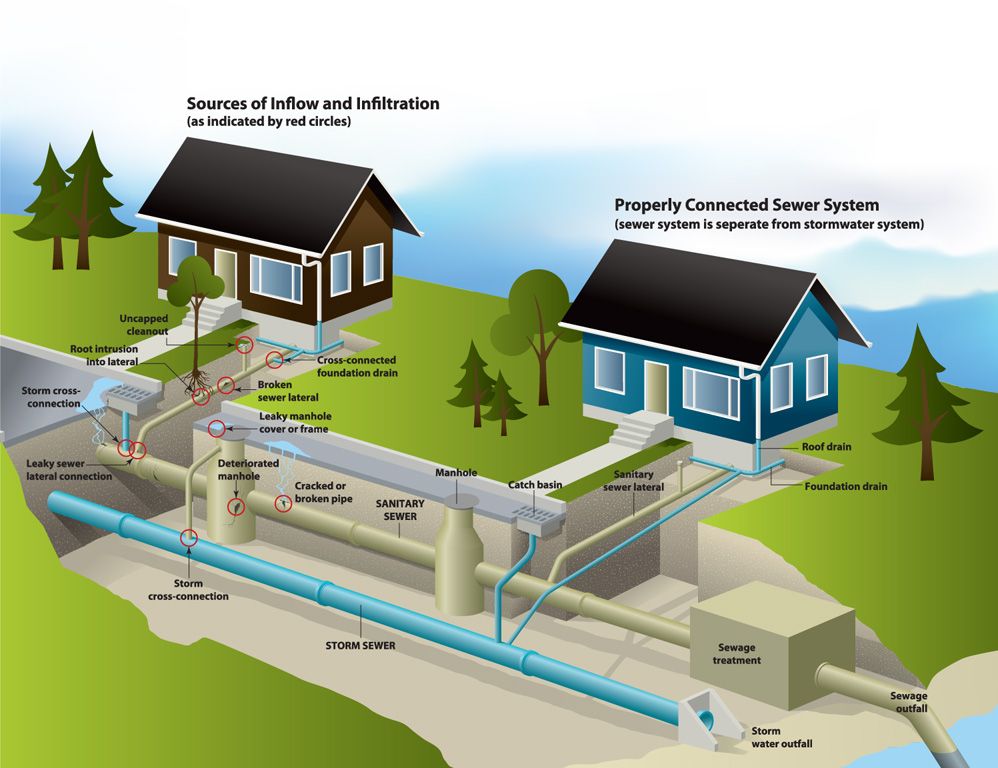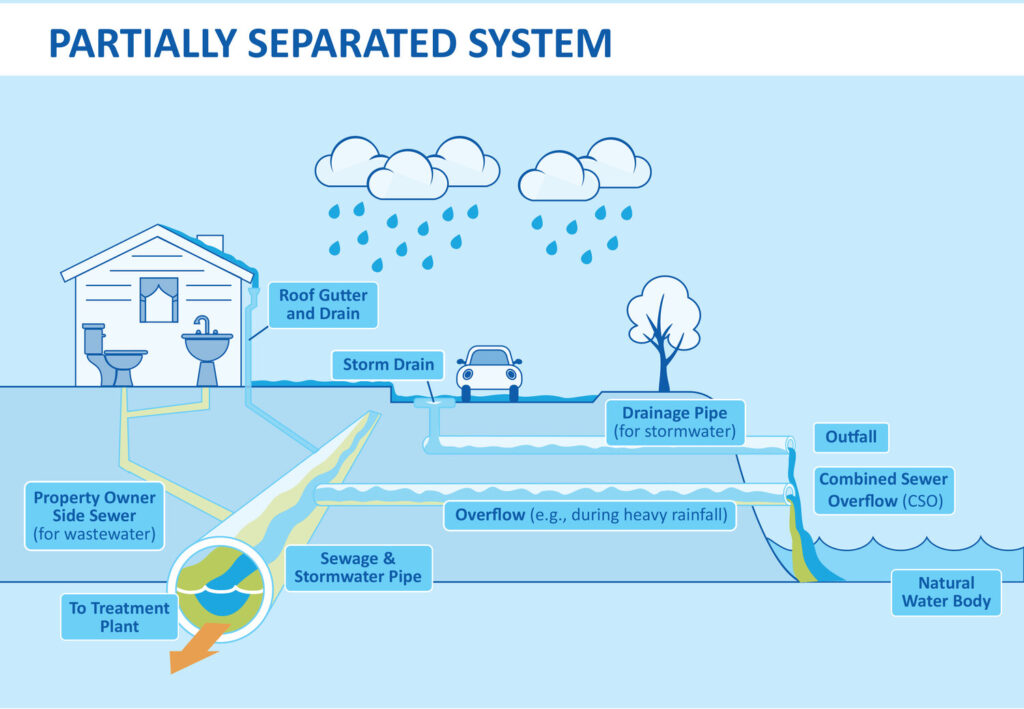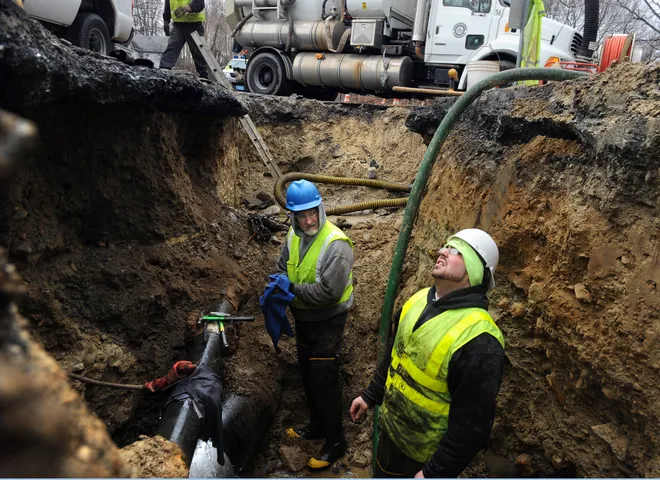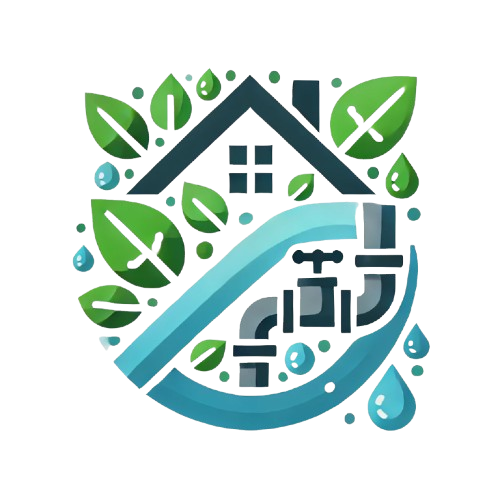Sewer System Upgrades and Environmental Compliance in Canada
Sewer systems are vital for maintaining public health and managing wastewater in urban and rural areas. However, aging infrastructure, population growth, and environmental challenges such as climate change are putting increased pressure on existing sewer systems across Canada. Upgrading or replacing sewer systems has become a necessity, not just to maintain functionality but also to comply with strict environmental regulations aimed at reducing pollution and protecting natural ecosystems. This article explores the key environmental compliance requirements for sewer system upgrades in Canada and highlights best practices for eco-friendly, sustainable solutions.
The Importance of Sewer System Upgrades
Sewer systems in Canada serve two main purposes: the transport of wastewater from homes, businesses, and industries to treatment facilities, and the management of stormwater runoff. However, many older sewer systems were not designed to handle the increased volumes of wastewater and stormwater that modern urbanization has introduced.
Without upgrades, aging systems can experience blockages, leaks, and overflows, leading to environmental contamination, public health risks, and damage to aquatic ecosystems. Sewer system upgrades not only improve the efficiency and reliability of wastewater management but also help cities and municipalities meet the increasing demands of environmental compliance.

Key Environmental Challenges for Sewer Systems
Several environmental challenges are driving the need for sewer system upgrades across Canada:
- Combined Sewer Overflows (CSOs): In many older cities, combined sewer systems carry both wastewater and stormwater in the same pipes. During heavy rainfall, these systems can become overwhelmed, resulting in untreated sewage being discharged directly into rivers, lakes, and oceans.
- Stormwater Management: As urbanization increases, impervious surfaces like roads and buildings reduce the natural absorption of rainwater into the ground. This leads to higher volumes of stormwater entering the sewer system, increasing the risk of overflows and flooding.
- Climate Change: Changing weather patterns, including more frequent and intense storms, are exacerbating the pressure on existing sewer systems. As a result, infrastructure must be upgraded to handle larger volumes of water and prevent environmental contamination.
- Aging Infrastructure: Many of Canada’s sewer systems were built decades ago and are nearing the end of their useful life. Old pipes are more prone to leaks and blockages, leading to increased maintenance costs and environmental risks.

Key Environmental Regulations for Sewer System Upgrades
Upgrading sewer systems in Canada is subject to a variety of environmental regulations designed to protect water quality and prevent pollution. These regulations vary at the federal, provincial, and municipal levels but generally focus on preventing the release of untreated wastewater into the environment and ensuring the proper treatment of sewage.
1. Canadian Environmental Protection Act (CEPA)
The Canadian Environmental Protection Act (CEPA) is the primary federal legislation governing the protection of water and air quality. Under CEPA, it is illegal to release any substance that may harm the environment into water bodies without a permit. For municipalities upgrading their sewer systems, this means that any sewer overflows or untreated wastewater discharges must be minimized or eliminated through system improvements.
CEPA also regulates the treatment of sewage and the quality of effluent (treated wastewater) that is discharged back into the environment. Sewer system upgrades must ensure that wastewater treatment processes meet federal standards to protect aquatic ecosystems.

2. Wastewater Systems Effluent Regulations (WSER)
The Wastewater Systems Effluent Regulations (WSER), established under the Fisheries Act, set national standards for the quality of effluent discharged from wastewater treatment systems into rivers, lakes, and oceans. These regulations require municipalities to meet specific limits for harmful substances such as suspended solids, biochemical oxygen demand (BOD), and other pollutants.
Municipalities undertaking sewer system upgrades must ensure that their systems comply with the WSER standards, particularly by reducing the risk of combined sewer overflows and improving the treatment of wastewater.
3. Provincial Environmental Regulations
Each province in Canada has its own environmental regulations governing sewer systems, stormwater management, and wastewater treatment. These regulations often go beyond the federal requirements, addressing local environmental concerns such as protecting drinking water sources or preserving sensitive ecosystems.
For example:
- Ontario: In Ontario, the Environmental Protection Act regulates the discharge of pollutants into water bodies and includes specific provisions for stormwater management and sewer systems. The Ontario Building Code also outlines standards for septic systems and on-site wastewater management.
- British Columbia: British Columbia has the Environmental Management Act, which governs the discharge of sewage and stormwater. Municipalities in BC must also adhere to stormwater management guidelines to prevent flooding and protect local watersheds.

4. Municipal Stormwater and Wastewater By-laws
Municipal governments often implement their own regulations and by-laws related to sewer system management. These regulations may include requirements for:
- Stormwater management plans: Municipalities often require property developers and businesses to submit stormwater management plans that outline how runoff will be controlled to prevent overloading the sewer system.
- Sewer Use By-laws: These by-laws regulate what can and cannot be discharged into the municipal sewer system, preventing harmful chemicals, oils, and other pollutants from entering the wastewater stream.
Best Practices for Environmentally Compliant Sewer System Upgrades
Upgrading sewer systems to meet environmental compliance is a complex process that involves modernizing infrastructure, adopting innovative technologies, and improving water management practices. Here are some best practices for ensuring sewer system upgrades are environmentally sustainable:
1. Separation of Stormwater and Wastewater Systems
One of the most effective ways to prevent combined sewer overflows is to separate stormwater and wastewater systems. This involves constructing separate pipelines for stormwater runoff and sewage, ensuring that stormwater is directed to retention ponds, infiltration systems, or other management solutions, while wastewater is sent to treatment facilities.
Cities like Toronto and Vancouver have implemented large-scale projects to separate stormwater and wastewater systems, reducing the risk of environmental contamination and improving system efficiency.

2. Green Infrastructure and Low-Impact Development (LID)
Green infrastructure solutions, such as permeable pavements, rain gardens, and green roofs, help manage stormwater naturally by allowing rainwater to infiltrate into the ground rather than entering the sewer system. These low-impact development (LID) strategies reduce the burden on municipal sewer systems and prevent overflows during heavy rainfall events.
Many municipalities in Canada now require or encourage the use of green infrastructure in new developments as part of their stormwater management strategies.
3. Infiltration and Inflow (I&I) Reduction
Infiltration occurs when groundwater enters sewer systems through cracks and leaks in aging pipes, while inflow refers to stormwater entering the system through manholes, roof drains, or other improper connections. Both infiltration and inflow (I&I) can overwhelm sewer systems and lead to overflows.
Reducing I&I is a key component of sewer system upgrades. Municipalities can employ various methods, such as lining old pipes, repairing leaks, and disconnecting improper stormwater connections, to minimize the impact of I&I on the sewer network.

4. Advanced Wastewater Treatment Technologies
Modern wastewater treatment technologies can significantly improve the quality of effluent discharged into the environment. Some advanced methods include:
- Membrane bioreactors (MBRs): These systems use membranes to filter out contaminants, providing a higher level of treatment compared to traditional methods.
- Ultraviolet (UV) disinfection: UV systems are used to kill harmful microorganisms in treated wastewater before it is released into the environment.
- Nutrient removal systems: These systems remove excess nitrogen and phosphorus from wastewater, preventing algal blooms and other environmental issues in water bodies.
Upgrading sewer systems with advanced treatment technologies helps municipalities meet environmental regulations and reduce the impact of wastewater on ecosystems.
Funding and Incentives for Sewer System Upgrades
Upgrading sewer systems to meet environmental compliance can be a costly undertaking, but various funding sources are available to support these projects. The Investing in Canada Infrastructure Program (ICIP) provides federal funding to municipalities for infrastructure improvements, including sewer and wastewater system upgrades. Additionally, provincial and territorial governments may offer grants or loans for municipalities to modernize their water and wastewater systems.
Some municipalities also offer financial incentives for homeowners and businesses to adopt green infrastructure solutions, such as rebates for installing rain barrels, permeable pavements, or green roofs.

Conclusion
Sewer system upgrades are critical for protecting Canada’s water quality, preserving natural ecosystems, and ensuring public health. With increasing environmental challenges, including climate change and urbanization, municipalities must modernize their sewer systems to meet federal and provincial regulations. By adopting best practices such as separating stormwater and wastewater systems, implementing green infrastructure, and utilizing advanced treatment technologies, Canadian cities can build resilient sewer systems that comply with environmental standards and safeguard the environment for future generations.
